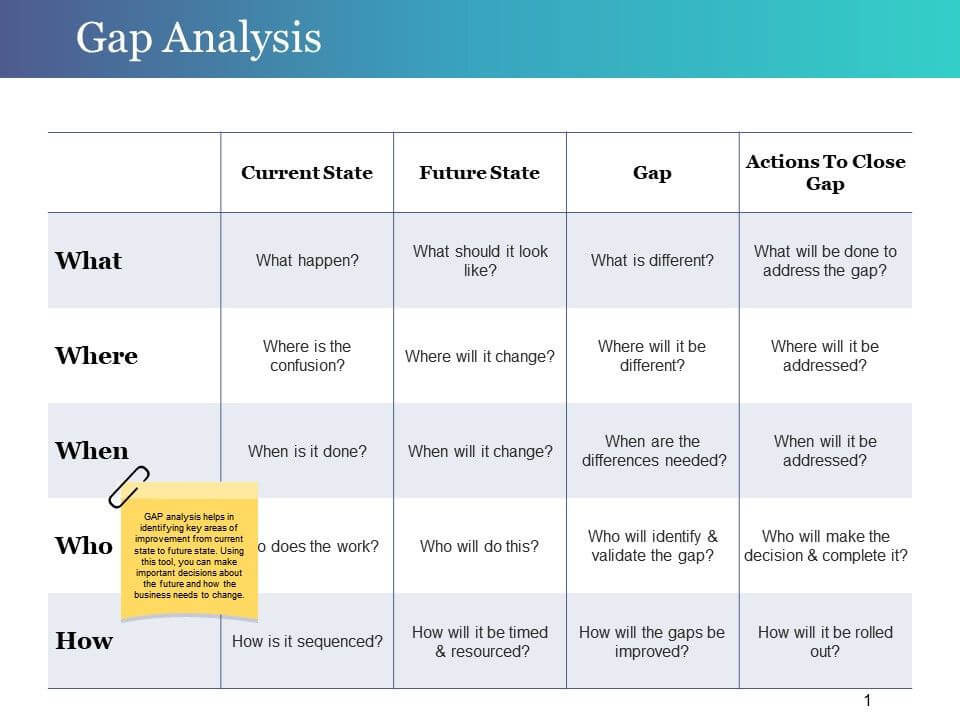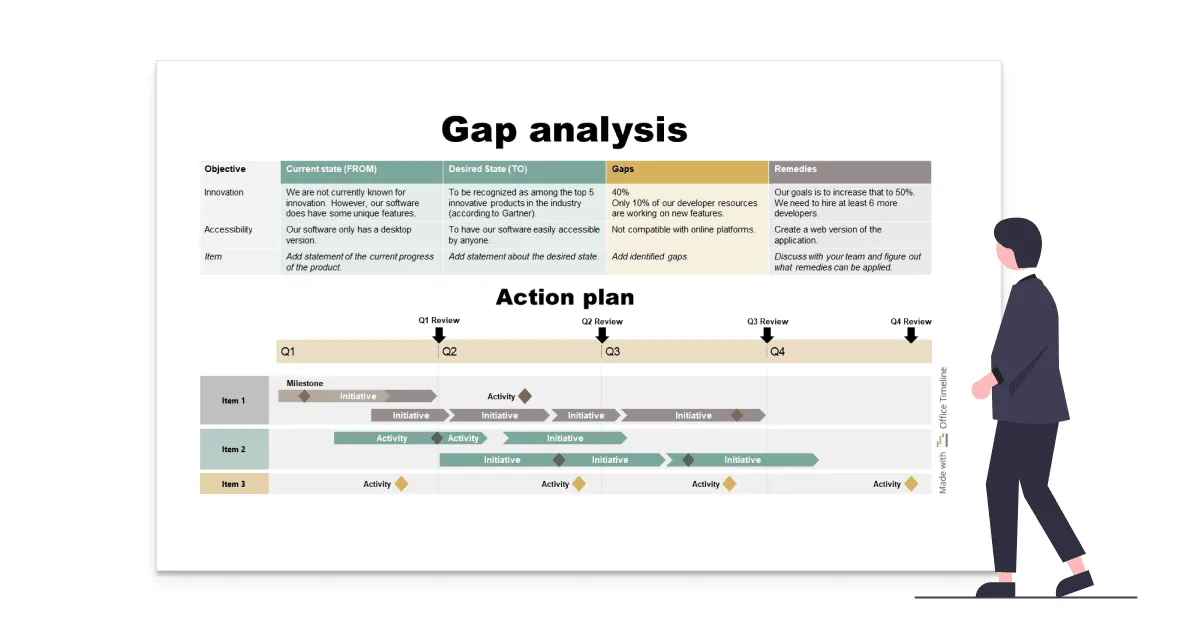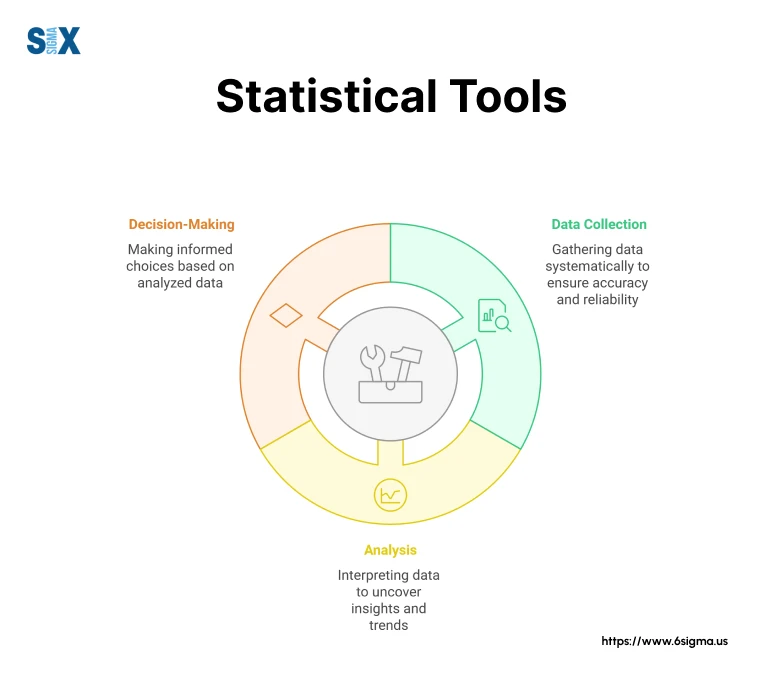Bridging the Research Frontier: How Evidence-Based AI Analysis Transforms Gap Identification
Revolutionizing Research Discovery Through Intelligent Analysis
The Evolution of Research Gap Discovery
I've witnessed firsthand how the landscape of research gap identification has transformed dramatically over the past decade. Where we once relied solely on manual literature reviews and serendipitous discoveries, we now harness the power of artificial intelligence to systematically uncover hidden opportunities in the vast ocean of academic knowledge.
Traditional challenges in identifying meaningful research gaps have plagued researchers for generations. The sheer volume of published research—with over 2.5 million scientific papers published annually—makes comprehensive manual review virtually impossible.
The paradigm shift from manual literature reviews to AI-powered analysis represents more than just technological advancement; it's a fundamental reimagining of how we approach scientific discovery. I've seen researchers reduce their gap identification time from months to days, while simultaneously increasing the comprehensiveness of their analysis.

Why do evidence-based approaches matter more than ever in modern research? The answer lies in the increasing complexity of scientific challenges we face. Climate change, pandemic preparedness, and technological ethics demand interdisciplinary solutions that can only emerge when we systematically identify where knowledge is lacking.
PageOn.ai's role in democratizing research gap identification through visual clarity cannot be overstated. By transforming complex research landscapes into intuitive visual representations, we're enabling researchers at all levels to contribute meaningfully to their fields' advancement.
Understanding AI-Powered Gap Analysis Fundamentals
The Technology Behind Smart Gap Detection
When I first encountered natural language processing for semantic understanding in research contexts, I was amazed by its ability to grasp not just keywords, but the underlying concepts and relationships within scientific literature. This technology forms the backbone of modern gap analysis systems.
NLP-Powered Research Gap Detection Process
flowchart TD
A[Research Literature Input] --> B[Natural Language Processing]
B --> C[Semantic Analysis]
C --> D[Pattern Recognition]
D --> E[Gap Identification]
E --> F[Evidence Mapping]
F --> G[Visual Representation]
style A fill:#FF8000,stroke:#333,stroke-width:2px
style G fill:#66BB6A,stroke:#333,stroke-width:2px
Machine learning algorithms identify patterns across vast literature that would take human researchers years to discover. I've seen these systems uncover connections between seemingly unrelated fields, leading to breakthrough interdisciplinary research opportunities.
Citation Network Analysis
Reveals unexplored connections by mapping how research papers reference each other, identifying clusters of knowledge and the gaps between them.
PageOn.ai's AI Blocks
Structure complex research landscapes visually, transforming abstract concepts into tangible, manipulable elements that researchers can explore intuitively.
Evidence-Based Methodologies in Practice
My experience with evidence-based methodologies has taught me that the most effective gap identification combines multiple approaches. Quantitative approaches using statistical analysis and data mining provide the numerical backbone, while qualitative approaches through thematic analysis and content mapping add crucial context and nuance.
Research Gap Analysis Methodologies Effectiveness
Hybrid methodologies combining human expertise with AI capabilities represent the gold standard in modern research. Real-time gap tracking and dynamic research landscape monitoring ensure that our understanding evolves as quickly as the science itself.
Systematic Approaches to Research Gap Identification
Literature-Based Gap Discovery
I've developed and refined systematic approaches to gap identification that leverage both traditional scholarly methods and cutting-edge AI technologies. Automated systematic review processes have revolutionized how we approach comprehensive literature analysis.
Cross-Disciplinary Pattern Recognition
One of the most exciting developments I've witnessed is AI's ability to identify patterns across disciplinary boundaries. This capability has unveiled research opportunities at the intersection of fields that traditionally don't communicate.
Identifying contradictions and inconsistencies in existing research requires sophisticated analysis. I use PageOn.ai's Deep Search to integrate relevant studies seamlessly, creating a comprehensive map of the research landscape that highlights areas of disagreement or uncertainty.
For those looking to enhance their literature review capabilities, I highly recommend exploring AI tools for comprehensive literature reviews, which can dramatically accelerate your research process.
Data-Driven Gap Analysis

Mining research databases for underexplored areas has become increasingly sophisticated. I regularly analyze publication trends and emerging topics using AI-powered tools that can process millions of papers in hours rather than years.
- Analyzing publication trends reveals temporal patterns in research focus
- Identifying geographical research gaps highlights global inequities in knowledge production
- Demographic analysis uncovers underrepresented populations in studies
- Visualizing gap patterns with PageOn.ai's drag-and-drop interface makes complex data accessible
Practical Applications Across Disciplines
Healthcare and Biomedical Research
My work in healthcare research has shown me the transformative potential of AI-powered gap analysis. A particularly compelling case study involves identifying gaps in COVID-19 research using machine learning, where we discovered critical understudied areas in long-term effects and pediatric populations.
Healthcare Research Gap Distribution
Precision medicine opportunities through AI gap analysis have revealed personalized treatment approaches that remain unexplored. Clinical trial design optimization based on identified gaps ensures that research resources are allocated to areas with the highest potential impact.
Creating visual research roadmaps with PageOn.ai's Vibe Creation feature allows research teams to collaborate effectively, ensuring everyone understands the landscape of opportunities and challenges ahead.
Technology and Innovation
Emerging Technology Frontiers
AI analysis reveals gaps in quantum computing applications, sustainable energy storage, and human-AI collaboration frameworks.
Patent Landscape Analysis
Identifying innovation gaps through patent analysis uncovers opportunities for breakthrough technologies and competitive advantages.
Social Sciences and Policy Research
In my experience with social science research, identifying underrepresented populations has been crucial for ensuring equitable knowledge production. Policy impact assessment gaps often reveal disconnects between academic research and real-world policy needs.

Behavioral research opportunities emerge when we systematically analyze existing studies. Presenting findings clearly using PageOn.ai's visual storytelling capabilities ensures that complex social phenomena are communicated effectively to diverse stakeholders.
Advanced AI Techniques for Gap Analysis
Machine Learning Approaches
I've implemented various machine learning approaches in my research gap analysis work, with BERTopic and topic modeling proving particularly effective for gap clustering. These techniques automatically group related research areas, making it easier to identify where knowledge is lacking.
Machine Learning Pipeline for Gap Analysis
graph LR
A[Data Collection] --> B[Preprocessing]
B --> C[Feature Extraction]
C --> D[Topic Modeling]
D --> E[Gap Clustering]
E --> F[Validation]
F --> G[Visualization]
style A fill:#FF8000,stroke:#333,stroke-width:2px
style G fill:#66BB6A,stroke:#333,stroke-width:2px
Predictive analytics for future research directions has become increasingly sophisticated. By analyzing historical research trends and current developments, we can forecast which areas will likely become critical gaps in the coming years.
Network analysis for collaboration opportunities reveals not just knowledge gaps, but also identifies potential research partners who could help address these gaps effectively.
PageOn.ai's Agentic approach transforms research intent into visual reality, making complex machine learning outputs accessible to researchers without technical backgrounds.
Natural Language Processing Applications
Semantic similarity analysis across research domains has revolutionized how we identify conceptual gaps. I've used these techniques to discover that similar problems in different fields often have complementary solutions that haven't been connected.
Automated hypothesis generation from identified gaps represents one of the most exciting frontiers in AI-assisted research. Multi-language research gap detection ensures that valuable insights from non-English publications aren't overlooked.
For deeper insights into document analysis capabilities, explore AI document analysis tools that can transform how you process research materials.
Overcoming Common Challenges
Data Quality and Bias Issues
Throughout my research career, I've encountered numerous challenges in gap identification, with data quality and bias being paramount concerns. Addressing publication bias in gap identification requires careful consideration of what research gets published versus what gets conducted.
Common Bias Types
- • Publication bias toward positive results
- • Geographic bias in research focus
- • Language bias in literature inclusion
- • Funding bias toward trendy topics
Mitigation Strategies
- • Include grey literature and preprints
- • Use multi-language search strategies
- • Apply statistical correction methods
- • Ensure diverse perspective inclusion
Handling incomplete or inconsistent research data requires robust preprocessing and validation techniques. Quality control through PageOn.ai's structured approach ensures that the gaps we identify are genuine knowledge voids rather than artifacts of poor data quality.
Technical and Methodological Limitations
Balancing automation with human expertise remains crucial. While AI can process vast amounts of information, human researchers bring contextual understanding and creative insights that machines cannot replicate.

Dealing with rapidly evolving research fields presents unique challenges. I've found that integrating multiple data sources effectively while maintaining research integrity requires careful methodology design and constant validation against emerging literature.
Tools and Platforms for Research Gap Analysis
Specialized AI Research Tools
My extensive experience with various research tools has taught me that selecting the right platform can dramatically impact the quality and efficiency of gap identification. Comprehensive platforms for systematic gap identification have evolved significantly in recent years.
| Tool Category | Key Features | Best For |
|---|---|---|
| Literature Analysis | Semantic search, citation mapping | Initial gap discovery |
| Data Mining | Pattern recognition, trend analysis | Large-scale analysis |
| Visualization | Interactive maps, network graphs | Communication & presentation |
| Report Generation | Automated summaries, citations | Documentation & sharing |
For documenting your findings effectively, consider using AI research report generators that can streamline the process of creating comprehensive gap analysis reports.
Integration with existing research workflows is essential for adoption. PageOn.ai's unique position in visual research communication makes it particularly valuable for teams that need to collaborate across disciplines and expertise levels.
Best Practices for Tool Selection
Evaluating tool capabilities against research needs requires systematic assessment. I recommend creating a requirements matrix that maps your specific gap analysis needs to available tool features.
Tool Selection Criteria
- • Data source coverage and integration capabilities
- • Analysis depth and methodology options
- • Visualization and reporting features
- • Collaboration and sharing functionality
- • Cost-benefit ratio for your research scale
Building effective research technology stacks often involves combining PageOn.ai with complementary research tools to create a comprehensive gap analysis ecosystem.
From Gap Identification to Research Impact
Translating Gaps into Research Questions
The journey from identifying a research gap to formulating actionable research questions is where many researchers struggle. I've developed a systematic approach that transforms abstract gaps into concrete, fundable research proposals.
From Gap to Impact: Research Development Pipeline
graph LR
A[Gap Identified] --> B[Question Formulation]
B --> C[Hypothesis Development]
C --> D[Methodology Design]
D --> E[Funding Proposal]
E --> F[Research Execution]
F --> G[Impact Assessment]
style A fill:#FF8000,stroke:#333,stroke-width:2px
style G fill:#66BB6A,stroke:#333,stroke-width:2px
Prioritizing gaps based on impact potential requires careful consideration of multiple factors: scientific significance, feasibility, resource requirements, and potential societal benefits. Building collaborative research networks around identified gaps amplifies the potential for breakthrough discoveries.
Visualizing research pathways with PageOn.ai helps teams understand the journey from gap to impact, ensuring all stakeholders are aligned on objectives and methodologies.
Communicating Research Gaps Effectively

Creating compelling visual narratives for stakeholders has become essential in modern research. I've found that using PageOn.ai to turn complex gaps into clear visual stories dramatically improves engagement from funders, collaborators, and the public.
Grant Proposal Elements
- • Clear gap articulation with evidence
- • Innovative approach justification
- • Expected impact quantification
- • Visual roadmap of research plan
Publication Strategies
- • Gap analysis as standalone papers
- • Integration in research articles
- • Visual abstracts for social media
- • Interactive supplementary materials
Future Directions and Emerging Trends
Next-Generation Gap Analysis Technologies
As I look toward the future of research gap identification, the integration of large language models promises unprecedented capabilities. These systems can understand context and nuance in ways that previous technologies couldn't, opening new frontiers in gap discovery.
Emerging Technologies in Gap Analysis
Real-time collaborative gap identification will enable global research teams to work together seamlessly, identifying and addressing gaps as they emerge. Automated research priority setting will help funding agencies and institutions allocate resources more effectively.
The evolution of AI assistants in academic research will further democratize access to sophisticated gap analysis capabilities.
Ethical Considerations and Best Practices
Ensuring transparency in AI-driven gap analysis is paramount. We must be clear about how algorithms identify gaps and what biases might influence their recommendations. Addressing algorithmic bias in research prioritization requires ongoing vigilance and diverse perspectives.
Ethical Guidelines for AI Gap Analysis
- • Maintain transparency in methodology and limitations
- • Ensure inclusive representation in training data
- • Preserve academic integrity and human oversight
- • Build equitable research agendas that serve all communities
- • Regular auditing of AI systems for bias and accuracy
Conclusion: Empowering Evidence-Based Research Discovery
The transformative potential of AI in research gap identification cannot be overstated. We stand at the threshold of a new era in scientific discovery, where the barriers between identifying problems and solving them are rapidly diminishing.
Building sustainable research practices with AI tools requires thoughtful integration of technology with human expertise. The importance of visual clarity in communicating complex research landscapes has never been greater, as we seek to engage diverse stakeholders in the research process.
PageOn.ai bridges the gap between fuzzy research concepts and actionable insights, transforming how we visualize and communicate research opportunities. By making complex analytical outputs accessible and engaging, we're democratizing the research process itself.
Call to Action: Embrace the Future of Research
As we move forward, I encourage you to embrace AI-powered tools while maintaining scientific rigor. The combination of human creativity and machine intelligence offers unprecedented opportunities for advancing knowledge and solving humanity's greatest challenges.
Whether you're a seasoned researcher or just beginning your academic journey, the tools and techniques discussed in this guide can transform how you identify and pursue research opportunities. The future of research is collaborative, visual, and powered by intelligent systems that augment our natural abilities.
Transform Your Visual Expressions with PageOn.ai
Join thousands of researchers who are already using PageOn.ai to identify, visualize, and communicate research gaps with unprecedented clarity. Our AI-powered platform transforms complex research landscapes into intuitive visual stories that drive discovery and innovation.
Start Creating with PageOn.ai TodayYou Might Also Like
Google Gemini Evolution: From Basic to Advanced Reasoning Models | Visual Timeline
Explore the complete visual evolution timeline of Google Gemini AI, from its foundation to revolutionary reasoning capabilities. See how Gemini transformed from basic to advanced models.
Mastering Google Slides Transitions and Animations: The Complete Motion Panel Guide
Learn how to create smooth transitions and animations in Google Slides using the Motion panel. Master slide transitions, object animations, and advanced techniques for impactful presentations.
Bringing Google Slides to Life with Dynamic Animations | Complete Guide
Transform static presentations into engaging visual stories with our comprehensive guide to Google Slides animations. Learn essential techniques, advanced storytelling, and practical applications.
Mastering MCP Architecture: The Ultimate Blueprint for Seamless AI-Data Integration
Explore the Model Context Protocol architecture that solves the N×M integration problem. Learn how MCP creates standardized connections between AI systems and data sources.